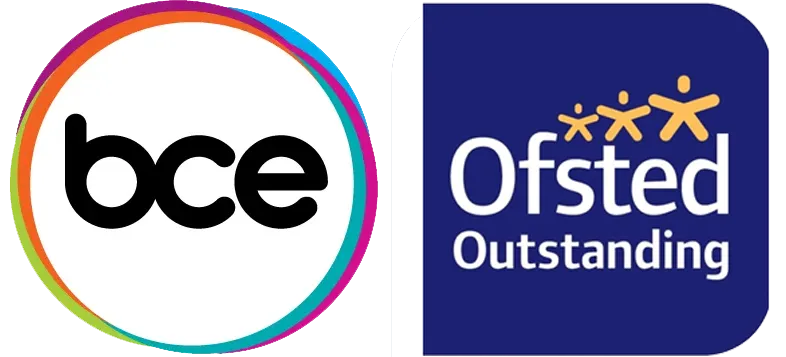
What are T Levels?
T Levels are a relatively new course launched in September 2020 for young people to take after their GCSEs. The courses are developed by employers, schools and colleges to make sure students have everything they need to help them prepare for working in a particular industry.
T Levels are a bit different to some of the other courses on offer. For example, on a T Level course, students will spend about 20% of their time working at an industry placement, giving them a chance to put the skills they learned into practice, with the other 80% spent in a classroom.
What types of T Levels are available?
Right now there is a range of subjects available in England, covering everything from construction to design and engineering to childcare. They’re available from an increasing number of education providers, like Big Creative Education, but the Government plans
In September 2023, the Government has plans to introduce T Levels that focus on agriculture, media, law and hairdressing, among others.
With any luck, in a few years, there will eventually be a T Level for everybody, no matter what industry or career they want to break into. Below is the full list of the types of T Levels currently available.
Business and Administration
Construction
- Building Services Engineering for Construction
- Design, Surveying and Planning for Construction
- Onsite Construction
Digital
Engineering and Manufacturing
- Design and Development for Engineering and Manufacturing
- Maintenance, Installation and Repair for Engineering and Manufacturing
- Engineering, Manufacturing, Processing and Control
Education and Childcare
Health and Science
Legal, Finance and Accounting
These T Level subjects all have work placements, focusing on giving you first-hand experience of the role. This will give you plenty of opportunities to learn while on the job and will make your personal statement or CV look really good!
Do I have to do a T Level placement?
The placement part of the T Level is mandatory, which means you have to do it. But don’t worry, it’s the whole reason for T Levels in the first place, so a T Level without the placement is just an A Level, really.
In the long run, T Levels will probably work out better, as you’ll get at least 45 days on a work placement where you can put your technical skills into practice.
You can get two types of placement on a T Level:
- Block Placement – This is where you spend a “block” of time in your day on your placement, with the rest in the classroom.
- Day Release: This is where you’ll do one full day a week at your work placement, with the rest of the week in a classroom.
It won’t always be one or the other, some colleges and schools will keep the times varied so you can have a good blend of different experiences over the course of your T Level.
What age are T Levels for?
T Levels are meant for young people aged 16+. Just like A Levels, they are free if you study before the age of 19.
Are T Levels better than A Levels?
It’s not that T Levels are better than A Levels, it completely depends on what you want from your studies. T Levels are another option for you, an alternative to A Levels and other courses that you might study between the ages of 16 and 19.
A T Level qualification is the equivalent of 3 A Levels, and they focus on vocational skills – things that help people get a job – as opposed to classroom study as is the case with A Levels. While A Levels are great for preparing students for further academic study, they’re not really hands-on. This is why T Levels have been developed.
What are the advantages of T Levels?
The main advantage of a T Levels course is that it prepares you for a career in skilled employment or further technical study through learning practical industry skills.
It helps you get up close and personal with your chosen career path, allowing you to take what you’ve learned in the classroom and try it out in a real-world setting.
In some ways, you can think of a T Level like an apprenticeship – both offer practical experience in the workplace. However, they are different.
Are T Levels like apprenticeships?
As we mentioned, there are some similarities between T Levels and Apprenticeships, but they are quite different at the same time.
While T Levels get students ready for work, training or more studying, apprenticeships focus mostly on the job aspect. About 80% of an apprenticeship is on the job, whereas 20% of a T Level is through a placement.
Because of this, Apprenticeships are more suitable for students who want to earn and learn at the same time.
How long do T Levels take?
T Levels roughly take around 1,800 hours across two years, like a Diploma of Higher Education. This time includes the industry placement part of the T Level, too.
As the time is split between the classroom and the workplace, the working part of the T Level can be spread out across the two years, so you have plenty of time to hone your skills and develop your career prospects.
Can you get into university with T Levels?
T Levels will grant UCAS points equivalent to three A Levels, depending on the grade students achieve.
For example, a T Level Distinction* grade will grant students the equivalent of three A Levels at A* grade, which is 168 UCAS points.
UCAS points can be used to apply for higher education, such as more advanced courses or even university. As of August 2022, 26 of the top 50 universities accept T Level students, so they’re a great way to gain entry onto a degree course.
| UCAS Tariff points | T Level overall grade |
| 168 | Distinction* |
| 144 | Distinction |
| 120 | Merit |
| 96 | Pass (C or above on the core) |
| 72 | Pass (D or E on the core) |
What can I do after T Levels?
Because T Levels equip students with the skills and experience needed to kick off a career in their chosen field, there are many options available to students after gaining a T Level qualification.
After passing a T Level, students will get a nationally recognised certificate that shows the grade they achieved – pass, merit, distinction or distinction* – which can then be used to apply for higher education, a high-level apprenticeship or university.
Students who pass their T Level can also go straight into skilled employment.
In 2022, almost three-quarters of T Level graduates who applied to university managed to get a place, and many others went on to employment in the industry or an apprenticeship.
As you can see, T Levels are a versatile way to take your learning and skills to the next level, with a range of options for study and employment afterwards.
If you’re interested in learning more about T Levels at Big Creative Education, visit the Digital Production, Design and Development course page.





